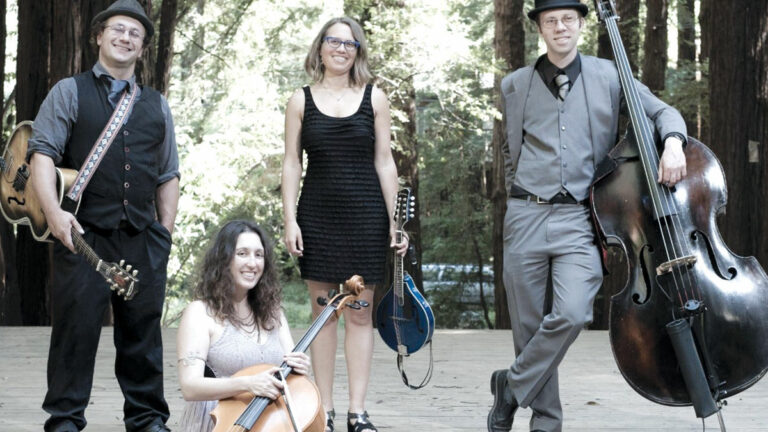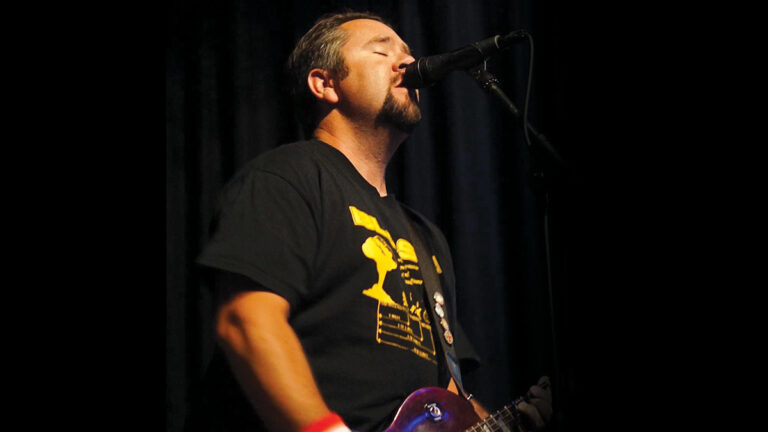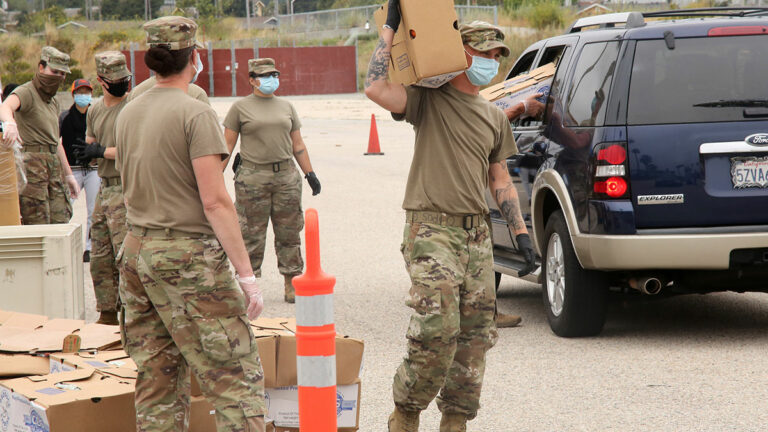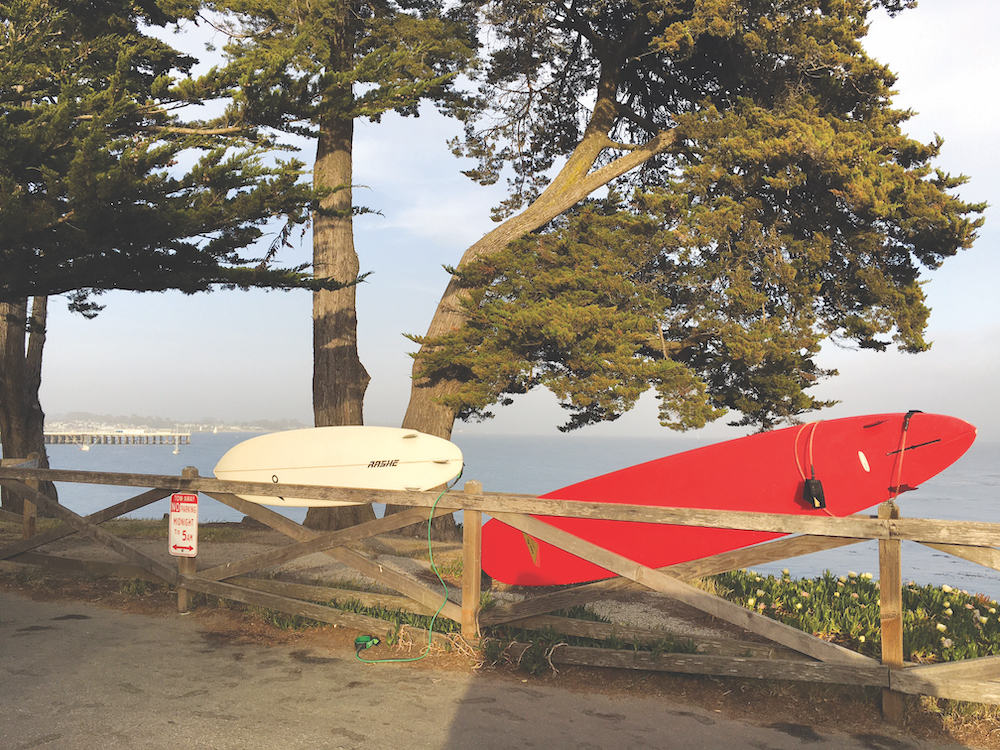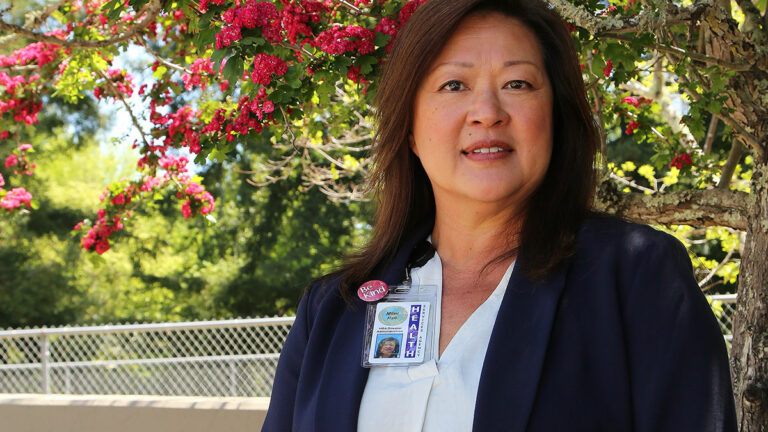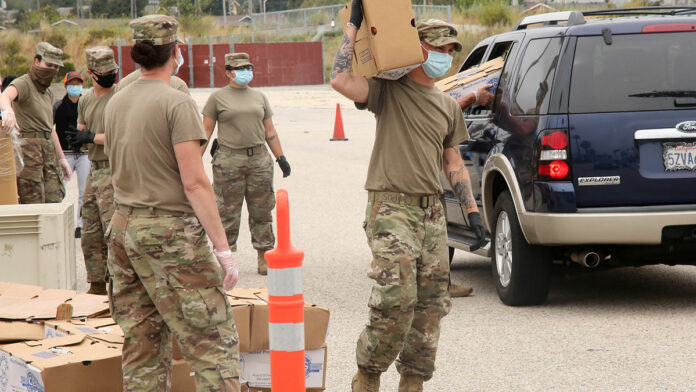As Santa Cruz County’s Covid-19 vaccinations inch toward the 300,000-mark and case rates continue to hover around record lows, industries and agencies have started to reopen and rebuild.
We asked people around the county what they learned about their industry during the pandemic, and, if they had a magic wand, what they would do to solve issues that arose during the pandemic. Their responses have been lightly edited for length and clarity.
Public Health
Mimi Hall, County Health Services Agency Director
“[April 5-9] was National Public Health Week, and part of what we have been trying to advocate for and communicate toward our community partners and those who make decisions about money for local health jurisdictions is that the pandemic has taught us that years and years of disinvestment in public health at the national level and the state level has created this precarious situation for public health.
It’s the core utility for a community to be healthy and well. You think of the utilities that we use every day: We rely on roads that are easy to drive on, traffic lights that work, running water, electricity—these things are core to our basic existence in a civilized community. Public health is the same thing for the health of the community. Without epidemiology, immunizations, prevention, education and great policies that address equity and social determinants of health, we can’t have a civilized society. I hope that’s one of things that has happened as a result of the pandemic, that people know what public health is, and that its importance has been elevated.
Public health doesn’t happen alone. Local health departments don’t create health. Communities, institutions and governments create health. And one of the biggest things that we’ve seen as a result of this pandemic is the lack of equity, and how institutional and historic structures that have created inequities across communities and ethnicities and races have meant that just because of who you are, what your ethnicity is and where you live means that you have poorer life outcomes—not just because of Covid but because of host of other things. So if I could wave a magic wand, I would have all those institutional and infrastructure inequities corrected, because that is going to be the way that we elevate the health of our entire community and our entire nation.”
Education
Michelle Rodriguez, Pajaro Valley Unified School District Superintendent
“Education has always had the potential to be the great equalizer for our students, families and community. The disruptions of the pandemic have created the opportunity to transform the status quo in education. PVUSD’s magic wand is facilitating greater levels of equity through a commitment to continuous innovation and improvement for all students in the years to come. The pandemic highlighted interrelated educational and social inequities such as the digital divide, food insecurity and housing instability. The pandemic also underscored the importance and impact our educational system’s resources have on students in the form of high-quality virtual instruction, daily nutrition, safe learning spaces and access to social, emotional and physical development services.
The magic wand of continuous innovation and improvement is hard at work in PVUSD guiding efforts throughout the pandemic that are grounded in our belief that the social, emotional and physical well-being of our students directly affects their ability to learn and achieve their potential. Listening to and examining data from our students, families, staff and educational community throughout the pandemic confirmed the need for PVUSD to continue to focus on the needs of the whole child and broaden our vision of youth development.
Continuous innovation and improvement throughout the pandemic within PVUSD’s thriving community partners has also resulted in significant actions. A partnership shift with Pajaro Valley Prevention and Student Assistance resulted in new systems for social emotional support for both students and their families. And finally, the Greater Pajaro Valley Talent Compact will bring together a group of community partners, students and families to co-design supports to drive equity and engagement initiatives to improve education and opportunities as we nurture the full potential of each whole child.”
Governance
Matt Huffaker, Watsonville City Manager
“I think we were all surprised by the lack of a cohesive national response, and we quickly came to the realization that much of the response efforts would fall on the shoulders of local governments: from getting timely and relevant information out to the community, helping small businesses navigate the health orders, pivoting all of our operations to ensure the community could safely access our services, and developing programs to help families struggling to pay rent. As a city, we’ve learned to be more nimble as an organization, including delivering services in new and innovative ways.
As the pandemic stretched on, it was hard to see the ways Covid-19 exacerbated systemic inequities, as evidenced by Watsonville’s disproportionately high case counts and initial challenges with accessing testing and vaccinations in South County. The greatest lesson learned for me is how important it is to have strong local partnerships in times of crisis. It was through partnerships with County Health, County Human Services and many community organizations that we were successful in developing a robust public education campaign, in addition to standing up mass testing sites and now multiple mass vaccination clinics in South County. In many respects, the pandemic has required that we work together more closely than ever. That hard work has paid off. Watsonville now has the highest immunization rate in the county, with the vast majority of the community now vaccinated.
If I could wave my magic wand to change something worsened by the pandemic, it would be the underlying inequities that allowed Covid-19 to hit Watsonville so hard: issues such as overcrowded housing and barriers to accessing quality health care. Of course, these issues can’t be solved by the city alone, and will require us to continue to leverage the strong partnerships we’ve developed through this pandemic.”
Arts
Mike Ryan, Santa Cruz Shakespeare Director
“Theatre artists are astonishingly resilient people. The pandemic made it impossible for them to create in the usual ways, and they responded by finding new ways to make art. Whether it was to pivot to Zoom presentations, or to perform drive-in style in parking lots, or to reawaken our appreciation of radio plays, they managed to create and to fulfill the fundamental human need to share stories. It’s hard to imagine where any of us would have been without the entertainment industry while in isolation for the past 14 months, so I think the pandemic heightened our communal appreciation for the performing arts.
Because theatre operates on such a narrow profit margin, we tend to produce at a breakneck pace. Another good thing to come out of the pandemic was the chance to pause and reflect as an industry on issues of racial justice brought so tragically into focus by the murder of George Floyd. We’ve seen that theatre, and the larger entertainment industry, have played a significant role in upholding systems of white supremacy. This pause has allowed us to grapple with that reality and to start to change policies and practices that have been harmful to Black, Indigenous, and other people of color.
Theatre is a hard business, and there will always be those artists who surrender to the pressures of needing more stability, money and health care than a theatre career affords. The pandemic magnified those pressures a hundredfold, and over the last year many wonderful creatives have left the business and we are all the poorer for it. If I could wave a magic wand to create systems like universal basic income and universal health care in the United States to combat this hemorrhaging of vital talent, I’d do it in a heartbeat.”
Agriculture
Tom AmRhein, Vice President of Naturipe Berry Growers and General Manager of Elkhorn Berry Farms
“In these challenging and even divisive times, I learned of the deep dedication our local agricultural industry has to the well-being of the whole community. For over a century, the local industry has maintained a voluntary and vibrant non-governmental organization, the Santa Cruz County Farm Bureau, which has responded to many challenges over the years, even as the very structure and culture of the industry has changed in ways nobody could ever have imagined.
The people who make up our county’s diverse agricultural industry come from an amazing range of culture, language and heritage. Through the leadership of the County Farm Bureau, the industry was able to come together and give this complex mix a unified voice that has been able to work with our county’s governmental departments, regulatory agencies, nonprofit groups and private health care providers to create a model response to the pandemic. As a result, our agricultural worker community and, by extension, the whole community, has benefited.
A serious issue that arose during the pandemic is embodied in the state’s response to it. For example, the federal government, through the CDC, issued broad guidelines on how to manage Covid in the workplace. There was a wide latitude for local communities and industries to create specific, practical and effective operational solutions. By contrast, the state government seems to have managed from the top down. It has been very difficult to effectively use the resources and ingenuity of the local community and industries to create practical solutions to our unique circumstances. This was starkly highlighted in terms of the vaccine roll out.
Fortunately, in our county, the cooperation between the ag industry, the county agencies and local health care providers led to a ‘just get it done’ attitude that has overcome some of the state’s overreach. If California is to prosper, there is no magic wand, but we must elect leaders who are willing to be activists in terms of reclaiming and rebuilding local control and accountability.”
Restaurants and Retail
Joanne Purdy Guzman, Co-owner of Bruno’s Bar and Grill
“The pandemic taught me that the restaurant business was broken in a lot of ways. We were aware the work was long and the profit margins were low when we got into this business, but the passion for cooking, love of food and people, along with the ability to execute our creative ideas was a trade-off we were willing to embrace.
We were so busy working our tails off prior to Covid-19 with 42 employees, running a full service restaurant, off site catering, catering pickup and events in our banquet hall, we were essentially playing whack-a-mole to keep everything running smoothly. At that time, my husband and I worked seven days a week, 12-14 hours per day, and were unable to take time off to reset. We were perpetually exhausted, but simultaneously invigorated by the rush and pride in watching our brand grow and thrive.
When Covid-19 came screeching into our lives, it forced us to slow down, take stock of where we were and allowed us the opportunity for strategic thinking. It showed us that we were resilient, we were still able to help others in need even when we ourselves were struggling, and the support we received from our community wrapped around us like a warm hug. We learned that we can survive not being open seven days a week, the tremendous value in cross-training staff to work in all areas, and that being adaptable is essential.
The main issue that arose during the pandemic for our industry and other small businesses is that currently we don’t have the employees needed to operate at the capacity we did prior to the pandemic. We are adjusting our business model as a result. If I could wave a magic wand to solve that, I would lower fixed operating costs so that owners could afford to pay their staff higher wages and provide better benefits to enable their employees to make a living wage that is in line with how hard the majority of them work and the cost of living.”
Philanthropy
Susan True, Community Foundation Santa Cruz County CEO
“I can’t really separate the Covid-19 pandemic and the CZU fires, as these twin emergencies engulfed Santa Cruz County simultaneously, one exacerbating the stress and trauma of the other. And what I learned about giving during these trying times is that caring for others is actually what we most want to do in a crisis. Generosity as instinctual—now that’s magic.
In a year when we lost jobs, homes and security, we still gave. Thousands of gifts to the Community Foundation’s Covid-19 and fire response funds came in all sizes and from every neighborhood. Since the beginning of the pandemic, the Community Foundation has distributed $8 million for Covid-19 relief, fire response and distance learning support and internet access.
But we gave so much more than money. We gave each other protection and encouragement. Comfort and courage. We checked on neighbors. Delivered groceries and meals to the housebound. Wore masks and physically distanced. Rescued animals. Shopped at local businesses. Got needed supplies for those without. We supported and honored farmworkers and other essential members of our workforce. We did our best when we thought we couldn’t do any more.
Some of the hardest hit in the past year have been moms. The pandemic removed 2.2 million women from the workforce, and those women overwhelmingly have children. Additionally, about one-quarter of today’s college students are also parents. The issues of childcare, working from home and remote schooling have disproportionately impacted mothers, and jeopardized the education and future careers of women trying to lift their families out of poverty.
In other words, moms need help! If I could wave a magic wand, there would be sustained federal support for parents of young children facing tough times. I don’t have a magic wand, but the Community Foundation has funding from gifts made decades ago that keep on giving through our endowed funds. These funds turn into our annual Community Grants, which enabled us to recently give $80,000 to the Cabrillo College Foundation in scholarships that will provide significant support to moms who will need larger than usual scholarships to finish their degrees. So, it may not be a magic wand, but it feels like magic—that human instinct of generosity and protecting each other.”
Environment
Gary Griggs, Distinguished Professor of Earth and Planetary Sciences at UCSC
“This past 15 months has been a period none of us alive today will ever forget. As an oceanographer/earth scientist who works with climate, one of few positive outcomes was a significant reduction in our carbon dioxide emissions due to our travel and work restrictions. For many in Santa Cruz, eliminating or reducing the daily commute to Silicon Valley changed how people worked, and I believe provided a new perspective on what is possible for the post-pandemic world. Fifty-thousand people don’t have to drive over Highway 17 every day, wasting fuel and valuable time.
After rising steadily for decades, global carbon dioxide emissions fell by 6.4%, or 2.5 billion tons in 2020 due to the pandemic. We in the U.S. did better, dropping nearly 13% in emissions, primarily due to a sharp decline in vehicle transportation. Aviation emissions dropped 48% from the previous year. Although our emissions were reduced, the challenge is how to maintain this reduction as the economy opens up and transportation increases.
One realization from the climate-related disasters of the past year and a half or so has been that more people have begun to understand that climate change and its impacts are real and they are happening now. The atmosphere is warming, the ocean is warming, and with more carbon dioxide being dissolved in the ocean, it is now about 30% more acidic that it was a century ago. These changes are affecting a wide range of marine organisms that make shells, including coral, oysters, clams, Dungeness and king crabs as well as many of the plankton that form the base of the oceanic food chain.
The Biden-Harris administration has already made responding to climate change a high priority and is beginning to repair the damage done during the previous four years. The target released last week is to reduce the nation’s carbon dioxide emissions 50% by 2030. This is an extremely important and very positive beginning that will benefit all of us, our children and grandchildren for decades into the future.”
Activism
Ruby Vasquez, Campesino Appreciation Caravan
“The lesson is that community action is critical during such emergencies, because when a crisis like this pandemic suddenly presents itself, the ‘carpet’ that has historically covered up the inequities and injustices that exist in our society is immediately pulled back, revealing the exploitation and wrongdoings that are impossible to ignore.
At the onset of Covid-19, a group of family and friends decided to take action after local campesinos (farmworkers) were not included in the national narrative of being ‘essential workers’ and were not being thanked for their work, as were other frontline workers. We decided to go out and thank campesinos for the important work that they do. That action of showing our gratitude to those who did not have the privilege of sheltering in place and risked their lives everyday to put food on our plates became the Watsonville Campesino Appreciation Caravan (WCAC).
After going out to multiple worksites on our first caravan on April 11, 2020, I learned that many in our community were also eager to take action. Seeing the messages about that first caravan that were posted on social media, people immediately began to ask, ‘How can I support this effort?’ Individuals donated cleaning products, PPE, children’s books, school supplies, gift cards and monetary donations used to purchase lunch for fieldworkers, and local community agencies began to provide us with information regarding Covid-19 safety, resources and services that get distributed to each worker. As we continue to go out to the worksites, we make sure to say that our message of gratitude does not only come from us, the WCAC team, but from many, many other individuals, groups and organizations in our community.
But this action is just a small ‘drop in the bucket.’ What’s needed is true reform in how campesinos are compensated for the job they do. Locally, the Covid-19 numbers were highest in the farmworker community due to several reasons, such as impacted living conditions and fear to seek medical attention due to immigration status. If I had a magic wand, I would make legal changes to ensure appropriate wages, living conditions, health care access and implement a fair and just immigration policy that recognizes the historical and ongoing contributions that campesinos have given to our community and country.”



